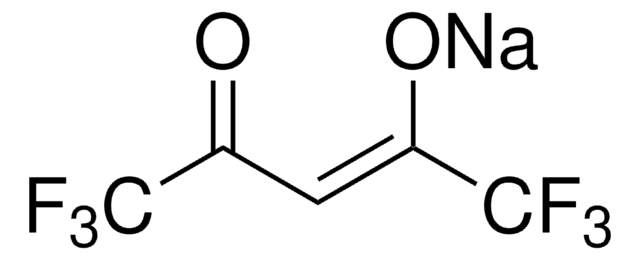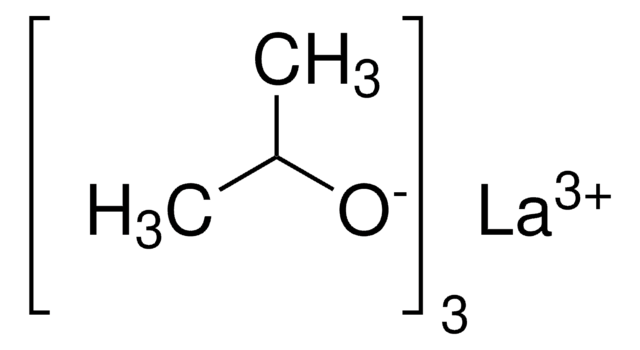547824
Tris[N,N-Bis(trimethylsilyl)amide]gadolinium(III)
98%
Synonyme(s) :
Gadolinium bis(trimethylsilyl)amide, Gadolinium tris[bis(trimethylsilyl)amide]
About This Item
Produits recommandés
Essai
98%
Forme
solid
Pertinence de la réaction
core: gadolinium
reagent type: catalyst
Pf
67-90 °C (lit.)
Chaîne SMILES
C[Si](C)(C)N([Gd](N([Si](C)(C)C)[Si](C)(C)C)N([Si](C)(C)C)[Si](C)(C)C)[Si](C)(C)C
InChI
1S/3C6H18NSi2.Gd/c3*1-8(2,3)7-9(4,5)6;/h3*1-6H3;/q3*-1;+3
Clé InChI
LFWPRLGQJJEPDP-UHFFFAOYSA-N
Description générale
Application
Mention d'avertissement
Danger
Mentions de danger
Conseils de prudence
Classification des risques
Flam. Sol. 1 - Skin Corr. 1B - Water-react 2
Risques supp
Code de la classe de stockage
4.3 - Hazardous materials which set free flammable gases upon contact with water
Classe de danger pour l'eau (WGK)
WGK 3
Point d'éclair (°F)
36.0 °F - closed cup
Point d'éclair (°C)
2.2 °C - closed cup
Équipement de protection individuelle
Eyeshields, Faceshields, Gloves, type P3 (EN 143) respirator cartridges
Faites votre choix parmi les versions les plus récentes :
Déjà en possession de ce produit ?
Retrouvez la documentation relative aux produits que vous avez récemment achetés dans la Bibliothèque de documents.
Notre équipe de scientifiques dispose d'une expérience dans tous les secteurs de la recherche, notamment en sciences de la vie, science des matériaux, synthèse chimique, chromatographie, analyse et dans de nombreux autres domaines..
Contacter notre Service technique










